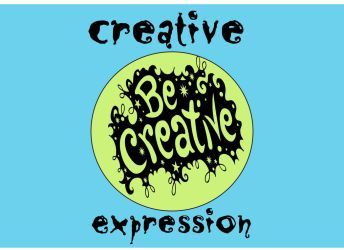Patients suffering from mental illnesses and disabilities require a specific set of treatment methods that are uniquely suited for them. Some tried and tested methods that therapists use to treat patients are individual therapy, group therapy, speech therapy, occupational therapy, and creative therapy.

source: deviantart.com
The most common treatment method for depression, anxiety, and most mental illnesses is speech therapy. However, talking about your trauma out loud and discussing your internal problems don’t always work for everybody. For some who have suffered through severe cases of traumatic events that impacted their mental health, talking about the pain and suffering they went through aggravates the problem. What, then, are methods that they could try without verbally expressing their emotions?
Researchers, scientists, and psychologists have found the answer. Patients can work through their emotions and feelings nonverbally with creative expression. The artistic expression occurs through innovative therapies that licensed therapists or art counseling experts guide their patients through. The observations and outcome of each creative therapy session can be used to interpret the patient’s current mental state, emotions, and feelings and also access their subconscious thoughts.
Creative Expression And Creative Therapy
The creative expression occurs through expressing one’s self creatively—usually in nonverbal terms. Creative therapy is the use of these creative outlets and expressions as a means to get a diagnosis and treatment of an individual suffering from mental illnesses.
“Creativity changes the individual and contributes to their well-being,” says Zorana Ivcevic Pringle, Ph.D.
Therapists generally encourage the use of the arts as a creative avenue for communicating their thoughts and emotions. Not only are creative therapies helpful in conveying unsaid feelings and emotions, but benefits of creative thoughts and its avenues are also mentally and emotionally freeing. Patients that engage in creative expression usually see an improvement in their moods and mental health in general.
“…it transcends and circumvents verbal language, providing both client and therapist with additional ways to help individuals of all ages express themselves through brain-wise, mind-body resonant approaches,” says Cathy Malchiodi, Ph.D., LPCC.
The creative process holds significant meaning to the individual as they can create something out of scratch on their own. It builds confidence and at the same time contributes to positive thinking. Little successes such as producing artwork, singing, and dancing all add up and help instill confidence. Debilitating thoughts decrease, and there are lesser risks of remission after treatment.

source: commons.wikimedia.org
On the other hand, patients might voluntarily choose to engage in creative expression instead of talk therapy. Creatives who are used to artistic means of expression might want to express themselves in nonverbal ways. Therapists will encourage this, as the effectivity of treatment always depends on how well the patient responds.
“The wonderful thing about this form of therapy is you don’t have to have skill or “talent,”” says Fran Harwood, M.A.
There are many types of creative therapies. The most common of these are art therapy, sand play, creative thinking in writing, clay, movement therapy, psychodrama, music therapy, and role play.
Typical results of those who engage in creative therapies include an increased awareness of their sense of self, release of suppressed emotions, and resolution of internal conflict. In general, creative therapies help patients come into terms with feelings and traumas they keep buried deep down. Through nonverbal ways, patients receive closure, which positively impacts their mental health.
How Creative Therapies Work
In case the patient hasn’t picked out a creative method on his own, his therapist can suggest one of the many types of therapies available. It has to be in line with the patient’s interest, and he can decline the suggestions, as long as he remains cooperative with his other tasks. Once the patient has chosen a therapy method, the real work on creative expression begins.
Unlike most art classes, creative therapies focus specifically on the patient and his inner self. They encourage the expression of emotional experiences; these include your feelings, imagination, and perception. Of course, creative therapies are still an avenue for creative expression. The patient can even learn new skill sets they previously don’t have. However, the focus remains on the introspection it allows. The emphasis is on developing and expressing images that come from inside the person.
Your therapist then evaluates your creative output. Art therapies are believed to be linked with mental well-being and a reflection of the inner self. Usually, troubled individuals produce darker, more dramatic types of art. Self-portraits of depressed individuals often appear as distorted versions of themselves.

source: pixabay.com
A patient could also express the trauma they experienced and how the event affected them emotionally and mentally. Sometimes, scenes are drawn out in explicit detail; some hint at what happened. As a whole, the creative expression takes time. Though a patient might prefer to partake in creative therapies instead of the usual therapy methods, it can still take months for them to open up and for the therapist to observe results.
Regardless of how long it takes, creative therapies positively impact those who try it. There is more freedom in creative expression. It brings in them a sense of satisfaction after they’ve finished a piece, and it’s an effective medium for communicating their inner thoughts, feelings, and emotions.
If you want to try therapy, but is hesitant for face-to-face sessions, you can try doing online treatment first, like BetterHelp. Licensed therapists can help you get the best benefits out of every course.
